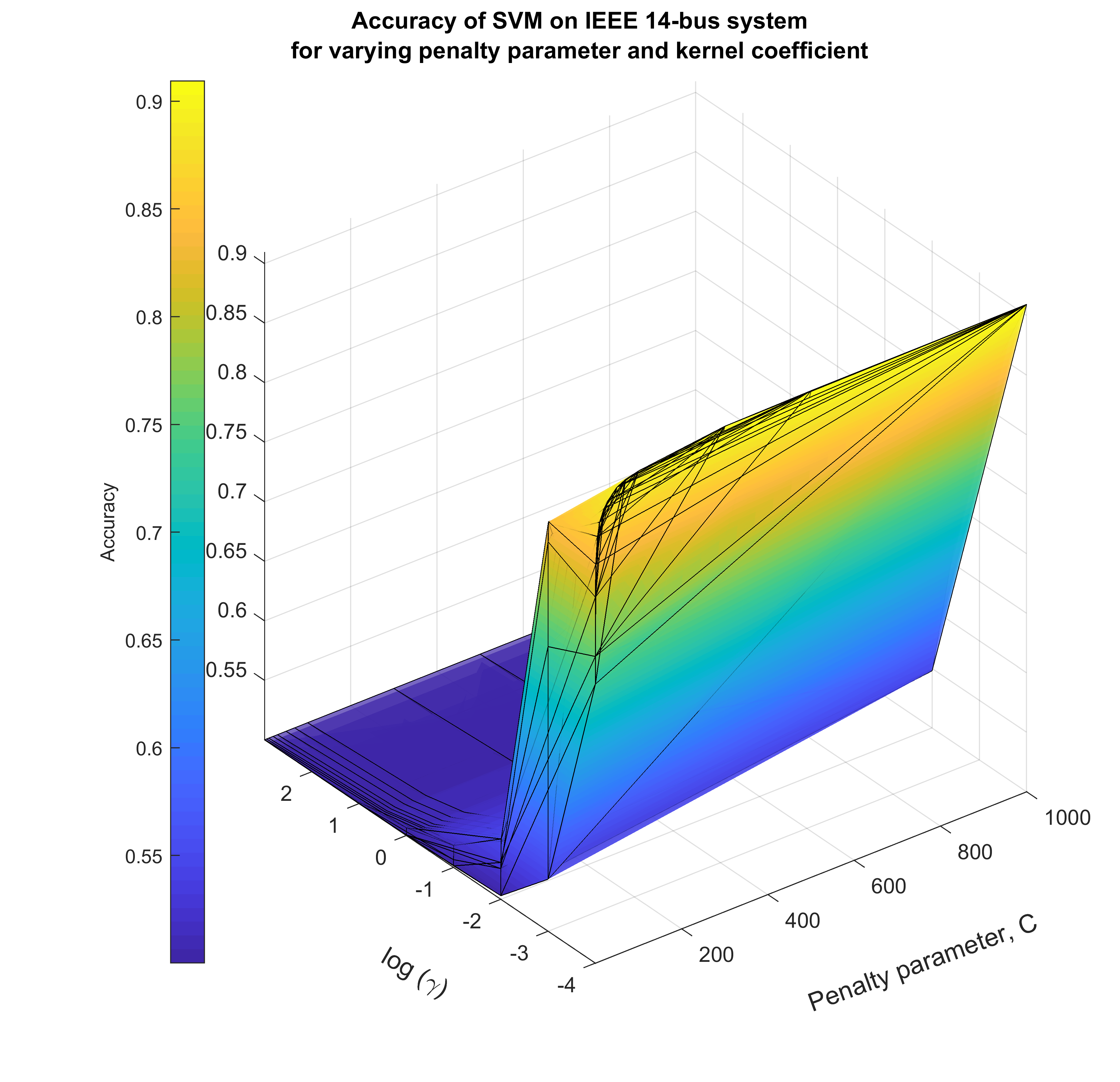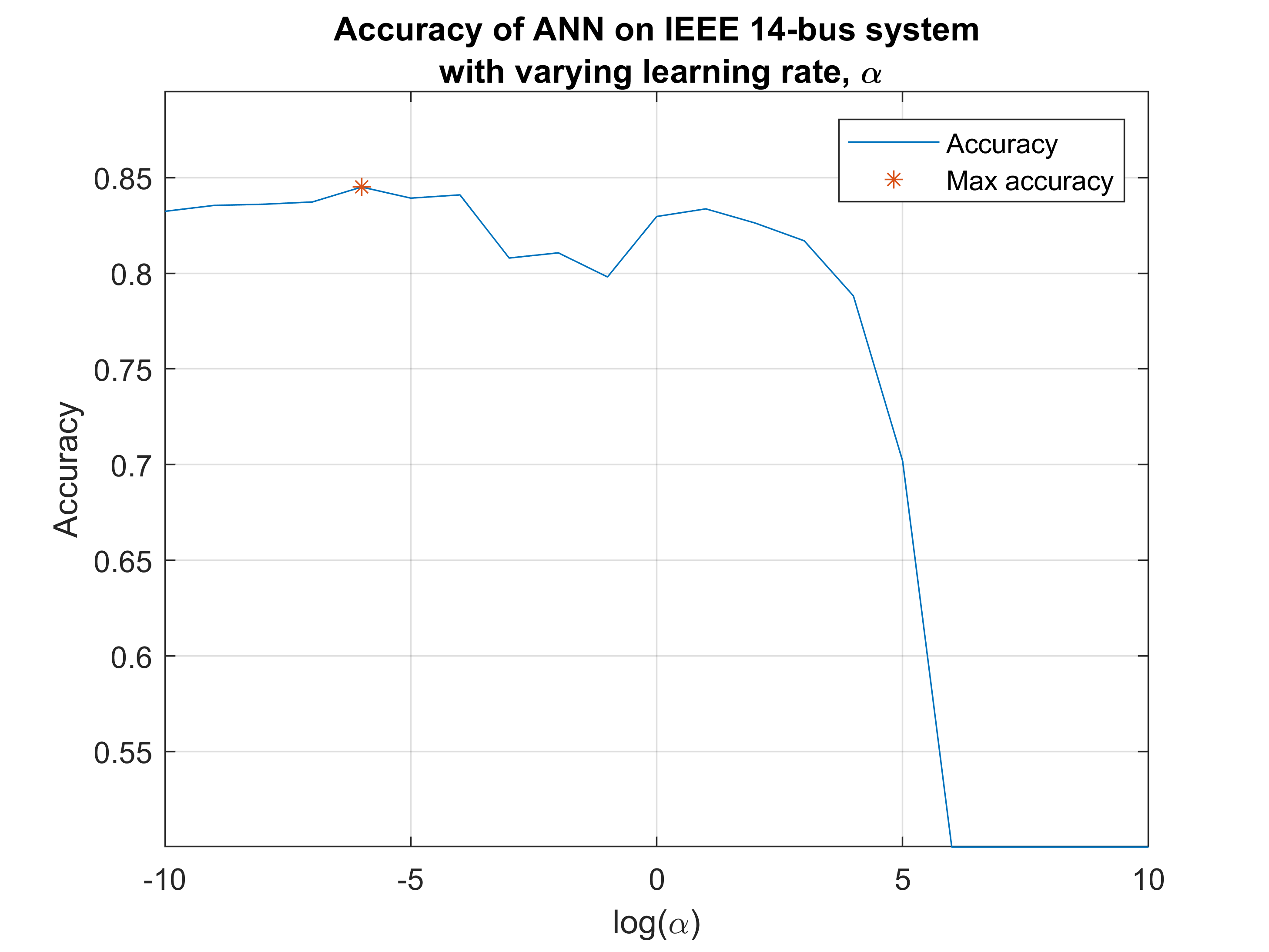Data
The data used in this experiment is generated using the IEEE 14-bus, IEEE 57-bus, and IEEE 118-bus systems and MATPOWER library. The measurement data consists of power flow of branches and buses which
are mapped into the state variables, the voltage bus angles, using the Jacobian matrix. False Data Injection (FDI) attacks are simulated based on the mathematical nature of these attacks as explained in various works of literature
(refer to publication). Based on this process, 10,000 instances of measurements are generated as training data with half of them
being infected with an FDI attack. Another 1,000 instances are generated as testing data to calculate the classification accuracy of each method.




